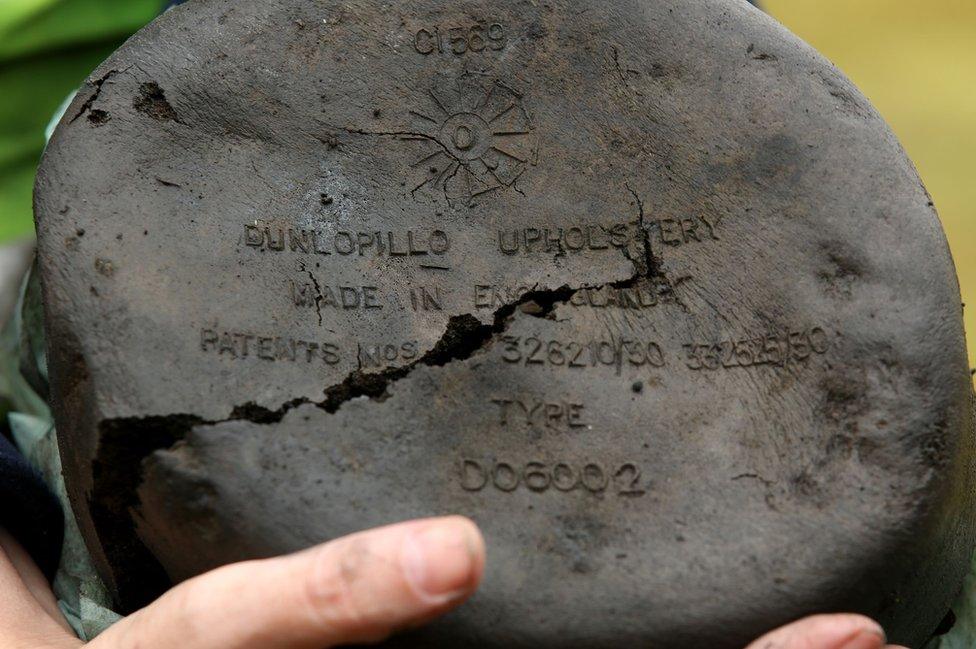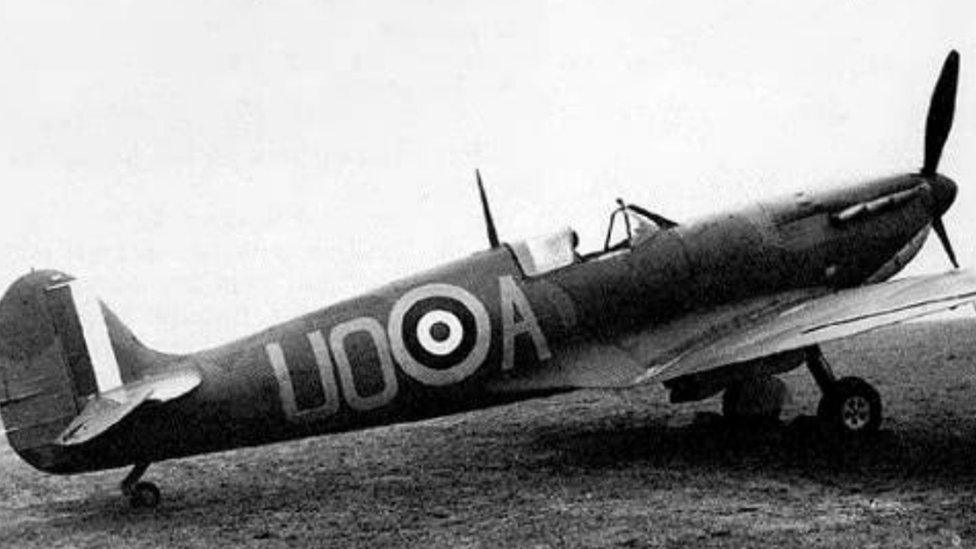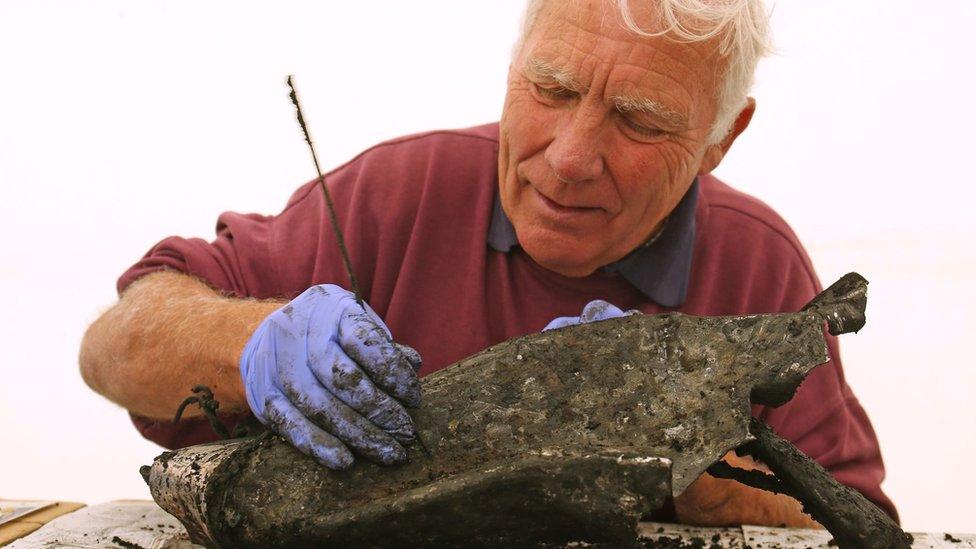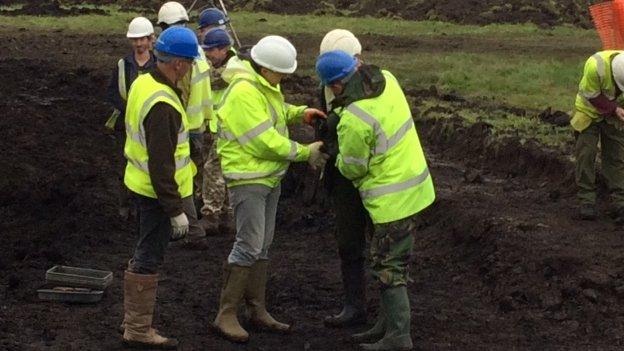WW2 crashed Spitfire parts unearthed in Cambridgeshire fen
- Published

Pilot Officer Harold Penketh died when his Spitfire Mk 1A crashed on a routine training exercise
A pilot's headrest and a starter motor are among the first artefacts found by archaeologists looking for a Spitfire that crashed in Cambridgeshire in World War Two.
The Rhodesian Squadron Royal Air Force, external plane, based at RAF Wittering, crashed at Holme on 22 November 1940.
Pilot Officer Harold Penketh, from Brighton, who was on a training mission, did not bail out and died.
Archaeologists hope to recover the engine later in the week.
The cause of the crash was never fully established, although an investigation concluded either the pilot's oxygen system failed or there was a physical failure of the plane.

Pilot Officer Penketh's headrest was one of the first items found by archaeologists

The headrest's leather cover was also discovered
Witnesses said the Mk 1A Spitfire X4583 nose-dived into farmland in the village of Holme, south of Peterborough.
The pilot's body was recovered from the wreckage and returned to his family, but the crater caused by the crash quickly filled with water and the plane remained in its fenland grave for 75 years.
'Significant' finds
After geophysicists located the exact site, excavation began on Monday.
So far, the starter motor, parts of the wing and canopy, bullets and various pieces of aircraft wiring have been recovered.

Archaeologists are not sure how much of Pilot Officer Penketh's Mk 1A spitfire will be retrieved
Pilot Officer Penketh's well-preserved rubber headrest - inscribed with the maker's name - and its leather cover were also found.
Lead archaeologist Stephen Macaulay, of Oxford Archaeology East, said the artefacts held "an awful lot of significance".

Volunteer John Edwards cleans a section of the Spitfire's cockpit
A specialist digger will be brought in later in the week as the team attempts to recover the Spitfire's engine.
"We're in deep peat and it's very wet and, while that may present itself as a problem, it is also a benefit because the plane sunk into the ground and didn't blow up and disintegrate on impact the way it might otherwise have done," Mr Macaulay said.
"We're hopeful that as we get deeper down we may find a fairly intact Merlin engine."

The starter motor was recovered
It is expected artefacts recovered by the team will eventually be put on public display.
- Published5 October 2015

- Published4 July 2015
